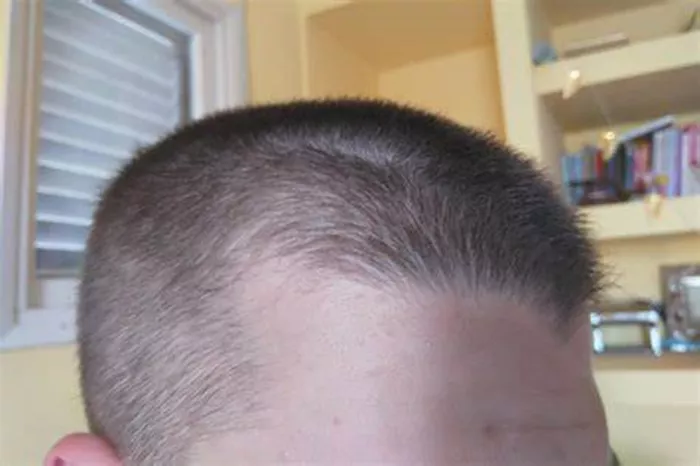Premature balding is a common concern that affects millions of people worldwide, regardless of age or gender. While genetics play a significant role in hair loss, many external factors can accelerate the process. The good news is that with the right knowledge and proactive measures, you can slow down or even prevent premature balding. This guide will explore the causes of early hair loss, effective prevention strategies, and lifestyle changes that promote healthy hair growth.
Understanding the Causes of Premature Balding
Before diving into prevention methods, it’s essential to understand why premature balding occurs. Hair loss can stem from various factors, including genetics, hormonal imbalances, nutritional deficiencies, stress, and poor hair care habits.
Genetics (Androgenetic Alopecia)
The most common cause of balding is hereditary hair loss, also known as androgenetic alopecia. This condition is influenced by dihydrotestosterone (DHT), a hormone that shrinks hair follicles over time, leading to thinner and shorter hair until growth stops entirely.
Hormonal Imbalances
Conditions like thyroid disorders, polycystic ovary syndrome (PCOS), and fluctuations in estrogen or testosterone levels can trigger excessive shedding. Postpartum hair loss is another example where hormonal shifts lead to temporary thinning.
Nutritional Deficiencies
A lack of essential vitamins and minerals—such as iron, zinc, vitamin D, and biotin—can weaken hair structure and disrupt the growth cycle. Poor dieting, eating disorders, and malabsorption issues contribute to this problem.
Chronic Stress and Anxiety
Stress triggers a condition called telogen effluvium, where hair prematurely enters the shedding phase. Prolonged stress can also worsen conditions like alopecia areata, an autoimmune disorder causing patchy hair loss.
Scalp Infections and Inflammation
Fungal infections (like ringworm), psoriasis, and seborrheic dermatitis can damage hair follicles if left untreated. Inflammation from these conditions restricts blood flow, depriving follicles of necessary nutrients.
Harsh Hair Care Practices
Over-styling, excessive heat treatments, tight hairstyles (like braids or ponytails), and chemical treatments (bleaching, perms) can cause traction alopecia—a form of hair loss due to physical damage.
Effective Strategies to Prevent Premature Balding
Now that we understand the causes, let’s explore actionable ways to maintain a healthy head of hair and prevent early balding.
Maintain a Nutrient-Rich Diet
Your hair thrives on a balanced diet rich in proteins, vitamins, and minerals. Incorporate the following into your meals:
- Protein: Hair is primarily made of keratin, a protein. Include lean meats, fish, eggs, beans, and lentils.
- Iron: Prevents anemia-related hair loss. Eat spinach, red meat, lentils, and fortified cereals.
- Omega-3 Fatty Acids: Found in salmon, walnuts, and flaxseeds, these fats nourish the scalp.
- Biotin & B Vitamins: Essential for keratin production. Eggs, nuts, and whole grains are excellent sources.
- Vitamin D: Low levels are linked to alopecia. Get sunlight exposure or consume fatty fish and fortified dairy.
- Zinc & Selenium: Support hair repair and growth. Oysters, pumpkin seeds, and Brazil nuts are great options.
Manage Stress Effectively
Since chronic stress is a major contributor to hair loss, adopting stress-reduction techniques is crucial:
- Exercise Regularly: Physical activity boosts circulation and reduces cortisol levels.
- Practice Mindfulness: Meditation, deep breathing, and yoga help lower stress hormones.
- Get Enough Sleep: Aim for 7-9 hours per night to allow hair follicles to regenerate.
- Seek Professional Help: If anxiety or depression is overwhelming, therapy or counseling can be beneficial.
Adopt a Gentle Hair Care Routine
Avoid habits that damage hair follicles:
- Limit Heat Styling: Reduce the use of blow dryers, straighteners, and curling irons. When necessary, apply a heat protectant.
- Avoid Tight Hairstyles: Ponytails, braids, and buns that pull on roots can cause traction alopecia. Opt for looser styles.
- Use Sulfate-Free Shampoos: Harsh detergents strip natural oils. Choose mild, pH-balanced products.
- Massage Your Scalp: Stimulates blood flow. Use fingertips (not nails) in circular motions for 5 minutes daily.
Address Underlying Medical Conditions
If you suspect a health issue is causing hair loss, consult a doctor:
- Thyroid Disorders: Hypothyroidism and hyperthyroidism both lead to thinning. Blood tests can diagnose imbalances.
- Hormonal Treatments: For conditions like PCOS, medications (e.g., spironolactone) may help.
- Scalp Treatments: Antifungal shampoos (ketoconazole) or steroid creams can combat infections and inflammation.
Consider FDA-Approved Hair Loss Treatments
For those already experiencing thinning, these options may help:
- Minoxidil (Rogaine): A topical solution that prolongs the hair growth phase. Works for both men and women.
- Finasteride (Propecia): A prescription pill that blocks DHT. Only approved for men.
- Low-Level Laser Therapy (LLLT): Devices like laser combs stimulate follicles via light energy.
- Platelet-Rich Plasma (PRP) Therapy: Involves injecting concentrated platelets into the scalp to encourage regrowth.
Lifestyle Adjustments for Long-Term Hair Health
Beyond immediate treatments, long-term habits play a vital role in preventing balding:
Stay Hydrated
Dehydration makes hair brittle. Drink at least 8 glasses of water daily to maintain scalp moisture.
Quit Smoking
Smoking reduces blood flow to hair follicles and increases oxidative stress, accelerating hair loss.
Protect Hair from Environmental Damage
Wear Hats in the Sun: UV rays weaken hair proteins.
Rinse After Swimming: Chlorine and saltwater can dry out and break hair.
Monitor Hair Health Regularly
Check for Excessive Shedding: Losing 50-100 hairs daily is normal; more may indicate an issue.
Look for Thinning Patterns: Receding hairlines or widening parts signal early balding.
When to See a Specialist
If lifestyle changes aren’t slowing hair loss, consult a dermatologist or trichologist. They can perform:
Scalp Biopsies: To detect scarring alopecia or infections.
Blood Tests: To identify deficiencies or hormonal problems.
Advanced Treatments: Such as hair transplants or customized therapy plans.
Conclusion
Premature balding doesn’t have to be inevitable. By understanding the root causes and implementing a holistic approach—combining proper nutrition, stress management, gentle hair care, and medical treatments when necessary—you can significantly reduce hair loss and maintain thicker, healthier hair for years to come. Start today, and your future self will thank you.
Related topics:
- How Many Days Does Telogen Effluvium Last
- How Can I Stop Hair Loss During Menopause
- How Much Hair Loss Is Normal for Teenage Male


